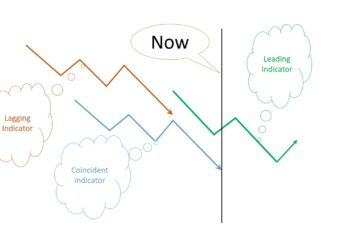There are three approaches for measuring GDP: product (output), income, and expenditures. The Expenditure method is the most used one.
Product Approach or Output Approach
It is an approach that measures the total monetary value of all products produced and services provided in a specific period (generally, one month, one quarter, and one year) and a specified geographical area.
Inputs are processed to get the output. Therefore, the final values of goods and services (output) are measured.
The product approach uses the value-added method, which is the difference between the total costs of owning goods and the selling price to the buyer. An example of value-added is added value to the produced notebook from purchased rolling paper.
Summing all value-added amounts producing goods and providing services will get us a GDP number.
GDP Calculation Formula: Product/Income Approach
Product Approach Issues
The product approach to GDP measurement is not problem-free. Consider some issues associated with the calculation of GDP before the interpretation of the GDP report. Some of these problems are as follows
1. Black Market Economy
A black market economy or underground economy relates to forbidden activities. In this market, transactions happen but are not considered in measuring gross domestic product (GDP). Goods are produced, such as opium and cocaine, and services are provided for human trafficking and working illegally, which the worker is paid and does not report for tax evasion.
In some countries like Afghanistan, the underground economy is a massive part of its GDP. Some estimate that only opium production in Afghanistan is worth around 40 billion dollars, while Afghanistan’s entire GDP is reported to be lower than $18 billion.
2. Household Jobs
Family members work in-house, but transactions do not happen, such as child care, repairing houses like painting, etc. Child care and repair of house stuff create value but are not added to the GDP number. If someone else, other than a family member; repairs a house, takes care of a child, a salary is paid, it is added to the GDP number.
In less-developed nations and rural areas, people tend to do more household work than in big cities and developed nations. Not counting these created values, dilute GDP. In reality, services are provided, and goods are produced.
3. Self-produced Goods
Goods produced by producers and services provided by providers for themselves are not added to the GDP. An example of self-produced good is fruits, which are produced by farmers and consumed by them. These self-produced goods and self-provided services are not counted in GDP. An example of service would be tailors that tailor clothes for themselves and are not counted in GDP.
4. Government Services
There are services that people receive but are paid for by the government, and they are not counted in GDP. An example would be teaching services by teachers in governmental schools that students don’t pay a fee. If these students join private schools, they will pay, and the fee will be counted in measuring gross domestic product (GDP) as services are provided by private school teachers.
Measuring GDP: Income approach
All products which are produced and all services which are provided are the incomes of the people in a society. So, measuring these incomes will get GDP. Examples of incomes are salaries, interests received, corporate profits, and rents paid to the landlord.
GDP Calculation Formula: Income Approach
Measuring GDP: Expenditure Approach
The expenditure approach claims that all produced goods and rendered services are paid for expenditure. So, summing all of the expenditures in a nation will lead us to GDP.
GDP Calculation: Expenditure Method
Most nations around the world use this method.
Note: government payments to citizens that don’t provide services, and do not produce a product, are excluded (which is spending for the government) to avoid double counting. An example would be United States government stimulus checks given to citizens during the coronavirus pandemic. Those checks are accounted for in ‘consumptions by household’ in the “C” section of the GDP equation.
Note: (X-M) shows the trade balance. If the outcome is a positive number, there is a trade surplus, and if the outcome is a negative number, there is a trade deficit.
Bottom Line
It does not matter what approach you use. All of them lead to the same thing. But, the most well-known approach is Expenditure Approach.






